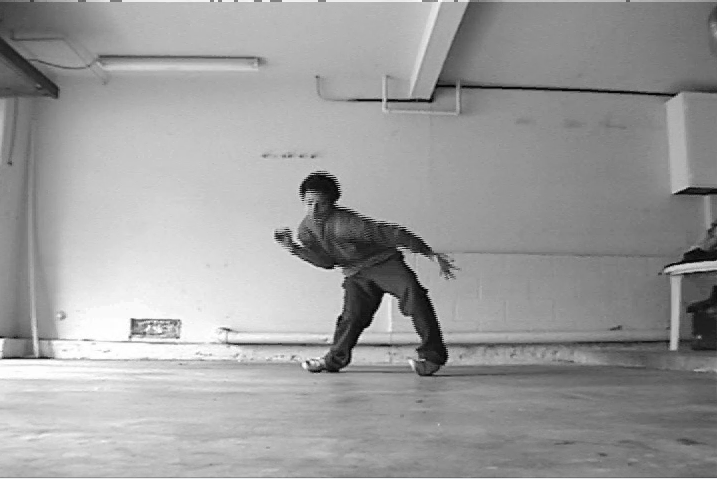Home Participants 22nd Biennale of Sydney (2020) Nicholas Galanin
Nicholas Galanin

Nicholas Galanin
Born 1979 in Sitka, Alaska, USA Lives and works in Sitka
Shadow on the Land, an excavation and bush burial is an excavation on Cockatoo Island of the shadow cast by the Captain Cook statue in Sydney’s Hyde Park. Imagine a future where the statues of veneration that mark our public landscape today have long been forgotten, buried beneath the earth. In this speculative archaeological-style dig, Nicholas Galanin ‘uncovers’ or ‘excavates’ the shadow cast by the Captain Cook statue. The work rests between a possible past or future burial, a presence through absence of an object that today very much still functions as a celebration of colonial heroics. Inverting the gaze of archaeology, which has often framed Indigenous cultures as belonging to the past, this work imagines a possible future where the memories of settler colonialism have become distant and buried. In evoking the temporality of the earth, this work also puts into perspective the young though devastating history of British invasion and settlement and imagines a possible Indigenous future where the land begins to heal colonial wounds while still remembering. The performative visual languages of two videos, Tsu Héidei Shugaxtutaan Parts I and II presented at the Art Gallery of New South Wales call out to one another across the Grand Courts, together challenging reductive perceptions of Indigeneity and what is contemporary. In Part I, hip-hop dancer David Elsewhere’s movements emanate impressions of timelessness against traditional Tlingit song, while in Part II, two dynamic forces meet, with the steps of traditional dance set to a pulsating electro-dub soundscape. Occupying their own plane within the Grand Courts, the works introduce sound, movement, and dance into the relative stillness. Nicholas Galanin’s work engages contemporary culture from his perspective, rooted in connection to land. He embeds incisive observation into his work, investigating intersections of culture and concept in form, image and sound. Galanin’s works embody critical thought as vessels of knowledge, culture and technology – inherently political, generous, unflinching, and poetic. Galanin engages past, present and future to expose intentionally obscured collective memory and barriers to the acquisition of knowledge. His works critique commodification of culture, while contributing to the continuum of Tlingit art. Galanin employs materials and processes that expand dialogue on Indigenous artistic production, and how culture can be carried. His work is in numerous public and private collections and exhibited worldwide. Galanin apprenticed with master carvers, earned a Bachelor of Fine Arts with honours in Jewellery Design and Silversmithing from London Guildhall University, United Kingdom and a Master’s Degree in Indigenous Visual Arts from Massey University, New Zealand. He lives and works with his family in Sitka, Alaska. Shadow on the land, an excavation and bush burial was commissioned by the Biennale of Sydney with assistance from the United States Government. Courtesy the artist. Presentation of Tsu Héidei Shugaxtutaan Parts I and II at the 22nd Biennale of Sydney was made possible with assistance from the United States Government. Courtesy the artist.
“Culture is rooted in connection to land. Like land, culture cannot be contained. I am inspired by generations of Tlingit and Unangax̂ creative production and knowledge, connected to the land I belong to. From this perspective, I engage across cultures with contemporary conditions. My process of creation is a constant pursuit of freedom and vision for the present and future. Using Indigenous and non-Indigenous technologies and materials, I resist romanticisation, categorisation and limitation. I use my work to explore adaptation, resilience, survival, active cultural amnesia, dream, memory, cultural resurgence, connection to and disconnection from the land.”